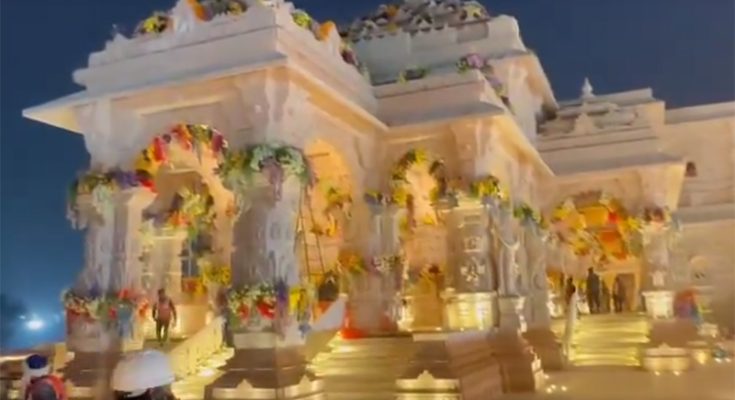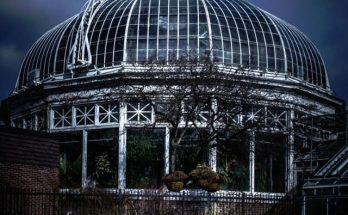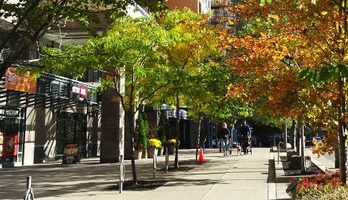#Ayodhya, #RamTemple, #AyodhyaRamTemple, #RamTempleConstruction, #UttarPradesh
New Delhi/IBNS-CMEDIA: The majestic temple at Ayodhya dedicated to Ram Lalla or Lord Ram’s child form has been constructed to last over a thousand years, media reported.
According to the Chairperson of the temple construction committee of the Shri Ram Janmabhoomi Teerth Kshetra Trust, Ayodhya, Nripendra Misra, the temple is a blend of traditional Indian heritage architecture incorporating science for construction so that it can last for centuries.
“The temple has been made to last more than a thousand years,” Misra told NDTV.
Nripendra Misra said top Indian scientists, too, have contributed to making it an iconic structure like never before. Even ISRO technologies have been suitably used in the temple, according to the NDTV report.
The architectural design follows the Nagar Shaily, reflecting the northern Indian temple style.
The temple has been designed by Chandrakant Sompura, whose family has designed heritage temples over 15 generations, said the report.
The Sompura family boasts a legacy of designing more than 100 temples, and Chandrakant Sompura continues this rich tradition.
“In the annals of architecture Shri Ram Temple will be the rarely seen, unique kind of splendid creation ever conceptualized not only in India but at any place on Earth,” Sompura was quoted as saying by NDTV.
The entire temple complex is spread over 2.7 acres, with a built-up area of approximately 57,000 square feet, structured across three floors, according to Nripendra Misra.
The most significant feature—no iron or steel has been used in the construction due to their limited lifespan of 80-90 years.
The temple is set to reach a height of 161 feet, which is around 70% of the height of the Qutub Minar.
Misra explained that a major challenge arose from the sandy and unstable ground beneath the temple due to proximity of the Sarayu River near the site.
To address this challenge, the soil in the entire temple area was dug up to a depth of 15 meters.
Ramancharla notes, “Engineered soil was then laid in the area to a depth of 12-14 meters, without using steel re-bars, and the 47 layered bases were compacted to create a solid, rock-like foundation.”
On this engineered foundation, a reinforcement was made with a 1.5-meter-thick M-35 grade metal-free concrete raft.
To increase the foundation’s strength, a plinth of solid granite stone, 6.3 meters thick, sourced from southern India, was placed.
The visible part of the temple for visitors is constructed using ‘Bansi Paharpur’ stone, a pink sandstone from Rajasthan.
According to the Central Building Research Institute (CBRI), the ground floor features 160 columns, the first floor has 132, and the second floor has 74, all crafted from sandstone and adorned with exterior carvings.
The ornate sanctum sanctorum is surfaced with white Makrana marble, sourced from Rajasthan—the same marble used in the construction of the Taj Mahal.
“After analyzing around 50 computer models, the chosen model, preserving the Nagara style of architecture, ensures both performance and architectural integrity. Proposed modifications enhance the structure’s architecture while maintaining safety against a 2500-year return period earthquake. Notably, the dry-jointed structure designed for a 1000-year lifespan consists solely of interlocked stone, without steel reinforcement,” CBRI was quoted as saying by NDTV.
The institute has been engaged in the construction of the Ram Mandir since early 2020, working in various capacities under a project mode.
Its involvement includes the structural design of the main temple, the design of the ‘Surya Tilak’ mechanism, vetting the design of the temple foundation, and supervising the structural health monitoring of the main temple, said the report.
According to Ramancharla, the most sophisticated software tools, and the 21st-century building codes, are what define the Ram Temple, with a heritage architecture as its base.
“There can be no doubts that based on the current state-of-the-art knowledge the Ram Mandir will surely survive more than a thousand years,” he told NDTV.
“It was a most enjoyable experience and great learning exercise as such challenges come maybe once in a lifetime,” he added.





